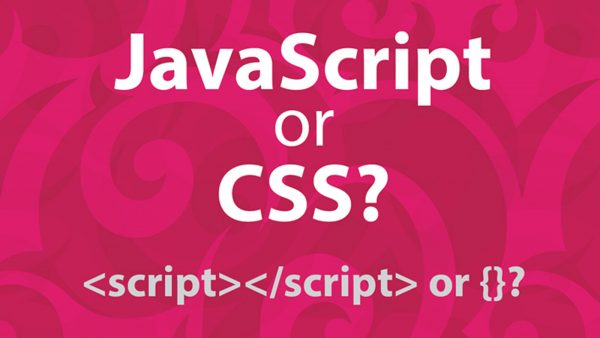CSS3 and JavaScript are both excellent choices for creating animations for websites and applications. There are, however, clear advantages to using one of the scripts over the other in specific instances. CSS3 works well for simple, isolated animations and transitions, while JavaScript is often the best choice for numerous or complex animations. Knowing which script to use for your web projects can increase your site’s loading speed, ensure browser and device compatibility, and save you from increased development time.
CSS3 for Animations
CSS3 is the newest version of CSS, and is familiar to most web developers and website owners. This simple cascading script works well with HTML and is relatively easy to master. Just about every browser and platform can process and display CSS3, making it a great choice for those with WordPress hosting and websites or even online pages and profiles that allow code to be entered. The most common place to use CSS3 for animations is in navigation menus. That’s because this simple script is great for changing the color of buttons, creating sliding and fading effects, and other animations that don’t require intense graphics or special effects.

JavaScript for Web Animations
JavaScript is a powerful alternative to CSS3 for creating web animations. JavaScript is less universally compatible than CSS3, however, as many websites and browsers disable the script by user settings. If you are creating content for a general web audience, JavaScript is an excellent choice despite this potential limitation. More secure or restricted websites and audiences, such as internal sites used in the workplace, may necessitate the use of less complex scripts such as CSS3. This can sometimes also be true of visitors with older, outdated devices and browsers. JavaScript is a great choice for more advanced web animations. The script allows you to have total control over every detail and aspect of your animations.
When to Use CSS3 for Web Animations
CSS3 should be used for most of your simpler, basic animations. This includes any animated effects used in your navigation bar or menus. CSS3 is a great choice for quick-loading color changes, photo and image filters, and lightboxing of media. CSS3 works great on HTML websites, and won’t require any additional server-side software or permissions. Use CSS3 if you’re just expanding or moving web elements by user command. You should also use it for other user interactions like zooming, dragging and dropping files, and loading bars. There are several tutorials online for creating simple CSS progress bars.
When JavaScript Should be Used for Animation
If you have WordPress hosting, or another platform-specific website then you should check that JavaScript will work with your existing code and content before using it for animated effects. In most instances, JavaScript will work fine for WordPress, Joomla, and Drupal sites. JavaScript should be used for all complex web animations where you need more control and increased special effects. Interactive web elements and even games can be built using JavaScript. This more powerful scripting language also provides more control over the direction and timing of your animations. You can even play animations in reverse using a few lines of JavaScript, which can make for an impressive scrolling or sliding effect on your website. JavaScript can even compete with Adobe Flash and other animation and graphics applications as a basis for complex, 3D and high-resolution animations. JavaScript does have a bit steeper of a learning curve, but tutorials like the ones hosted by HTMLGoodies and the David Walsh Blog can help you get started.
Performance of JavaScript vs CSS3 Animations
As mentioned, some browsers and environments disallow JavaScript due to security concerns and device capabilities. When given the choice between the two scripts however, you should also consider the performance needs of each script. CSS3 is often touted as being the way to load animations on a user interface. This holds true for many users standard settings and web browsers. JavaScript can be written to load quickly, however, especially if you have optimal web hosting and efficient coding practices. A study done by CSS-Tricks proved that animations created with JavaScript can load up to 500 percent faster than their CSS3 counterparts, under specific settings. The takeaway from this study is that if you’re creating complex animations with heavy scripting and large media files, JavaScript will likely be more efficient and perform better than CSS3. There may be no need for the advanced script in areas with simple animations, however, as CSS3 can work perfectly for these instances.
Each script has its unique benefits and advantages, and both make great animations that conform to current web standards. Choosing which script to use depends on your animation’s needs, placement, and intended audience. By reviewing the factors listed here such as device compatibility, animation complexity, development requirements, and personal preferences, you will be able to make informed decisions regarding the animations on your web projects.





